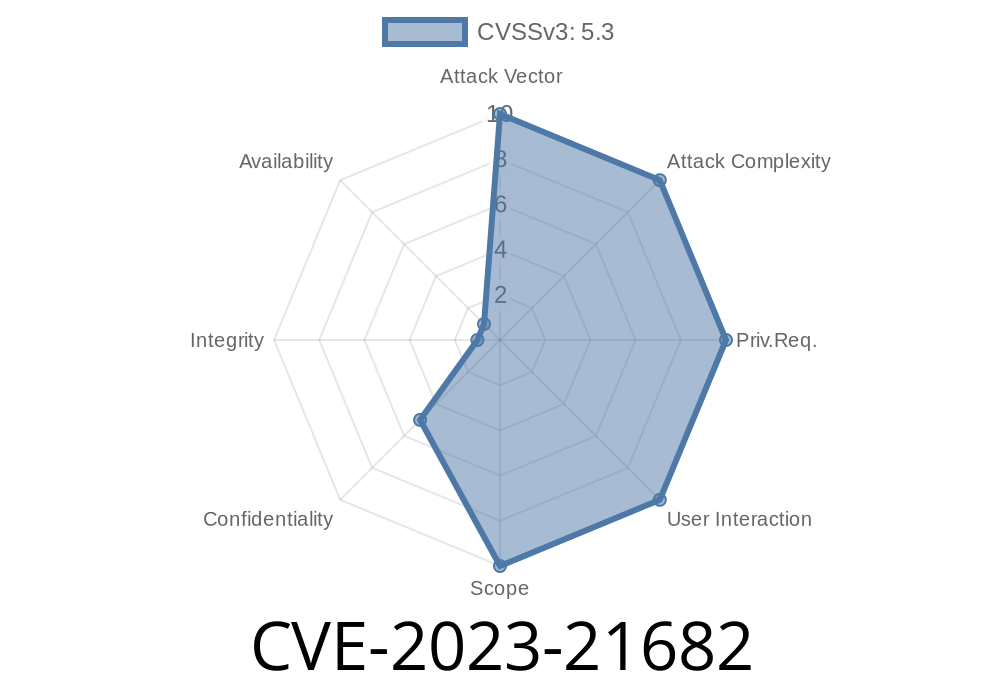In the constantly evolving world of cyber security, new vulnerabilities in widely used systems are regularly discovered by researchers and malicious actors alike. One such vulnerability, identified as CVE-2023-21682, affects the Windows Point-to-Point Protocol (PPP) and can lead to an information disclosure vulnerability. In this post, we will discuss the details of this vulnerability, how it can be exploited, and the steps to remediate the risks. Let's start with understanding the basics of PPP and how this vulnerability can impact its users.
Background on Windows PPP
The Point-to-Point Protocol (PPP) is a widely used communication protocol that enables two devices to establish a direct connection using a data link, such as an Ethernet cable, serial cable, or a phone line (using a modem). PPP is often used to establish internet connections, especially over dial-up modem and DSL connections. In Windows, the PPP implementation is integrated into the Windows operating system, enabling users to connect their devices to the internet using PPP-based connections.
Details of CVE-2023-21682
The vulnerability CVE-2023-21682 is an information disclosure vulnerability affecting the Windows implementation of the PPP. This vulnerability is due to a weakness in the way PPP handles and processes certain packets while establishing a connection. Attackers can exploit this weakness to intercept and analyze PPP packets exchanged between two devices during the connection establishment process. By doing so, the attacker may successfully gain access to sensitive information, including login credentials and other details used during the PPP connection setup.
Exploiting the Vulnerability
To exploit this vulnerability, an attacker must be able to intercept or eavesdrop on the communication link between the affected devices during the PPP connection setup process. Devices that rely on wired connections, such as Ethernet or serial cables, have a lower risk of exploitation, as the attacker must gain physical access to the communication link.
However, devices that rely on wireless connections or remote connections over the internet (such as VPN connections) are more susceptible to exploitation, as an attacker could employ techniques such as man-in-the-middle (MITM) attacks or sniffing programs to intercept and analyze the packets exchanged during the PPP connection setup.
Example code snippet of exploiting the vulnerability
import pcap
import dpkt
def analyze_ppp_packet(packet):
ppp = dpkt.ppp.PPP(packet)
# Check if the packet contains the targeted PPP message type
# (insert specific message type here for the exploit)
if ppp.message_type == target_message_type:
# Process the packet and extract sensitive information
# (insert exploit code here)
pass
sniffer = pcap.pcap(name=None, promisc=True)
sniffer.setfilter("proto 2") # Filter for PPP packets
for timestamp, packet in sniffer:
analyze_ppp_packet(packet)
In this simplified code snippet, the attacker would employ a packet sniffer (such as pcap) to capture PPP packets on affected devices' communication links. Once intercepted, the packets would be analyzed to extract sensitive information, such as login credentials.
Mitigation and Remediation
To mitigate the risk of this vulnerability, users are advised to apply any available security updates and patches for their Windows operating system, as these updates often include fixes for known vulnerabilities like CVE-2023-21682. Moreover, users should ensure they are using secure communication channels, especially when connecting to the internet or establishing PPP-based connections over untrusted networks.
Microsoft's Security Advisory for this vulnerability (linked below) also provides more in-depth information about the specific affected Windows versions and available patches.
Original References
1. CVE-2023-21682: https://cve.mitre.org/cgi-bin/cvename.cgi?name=CVE-2023-21682
2. Microsoft's Security Advisory: https://portal.msrc.microsoft.com/en-US/security-guidance/advisory/CVE-2023-21682
Conclusion
In this post, we have provided an overview of the Windows Point-to-Point Protocol (PPP) information disclosure vulnerability, CVE-2023-21682. By understanding how this vulnerability works and can be exploited, users can take appropriate action to ensure their systems are fully updated, secured, and resistant to the risks posed by this and similar vulnerabilities.
Timeline
Published on: 01/10/2023 22:15:00 UTC
Last modified on: 01/18/2023 16:07:00 UTC
